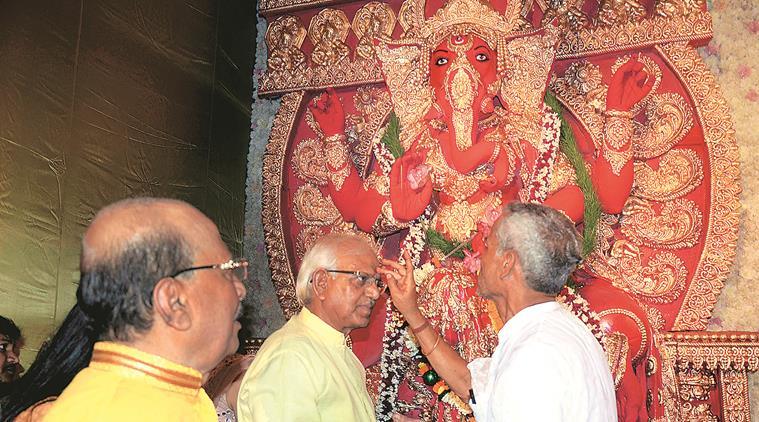Surprisingly, from last three to four years Ramnavami, Hanuman Jayanti have started being celebrated in Bengal, whereas Lord Ram was never popular in the list of worshipped gods by Bengali people and the latest addition is the celebration of Ganesh Chaturthi across Bengal but mainly in urban areas.

Image Courtesy: Indian Express Representation Image
West Bengal: West Bengal, rather undivided Bengal, is historically known for its unique AND rich culture. Generally, culture depends on the socioeconomic and demographic structure of that area.
After River Saraswati’s death in the western part of modern India, another civilization got stabilized in the eastern part of that land on the Bank of River, called Ganga. This civilization gradually became very strong economically because of its fertile land and suitable weather.
Due to this demographic character, the people of this area became soft in nature and started worshipping many such Gods and Goddesses which are representative of natural power, energy and threat.
With the evolution of such a list, people of this part got habituated of worshipping Lord Shiva, Lord Bishnu, Lord Indra, Lord Barun, Goddess Durga, Kali and other forms of these Gods and Goddesses.
Mainly, the economy of this land was based on farming and partially on trading. So, it was important to worship those powers which are favourable for farming and trading. Since this land was full of rivers and prone to various disease and prone to death due to snake and insect bites. This forced people to worship such powers which could prevent calamities or safeguard them.
Rituals of this area also vary from other parts of our nation because of various reasons including above-mentioned points.
Language and linguistics also play a major role in the development of culture and ritual.
Over the years, Durga puja, Kali puja, Manasa Puja, Shitala Puja, Kartik Puja, Ganesh Puja, Satyanarayan Puja, Dhammo Thakur Puja became a part of the life of Bengal.
Surprisingly, from last three to four years Ramnavami, Hanuman Jayanti have started being celebrated in Bengal, whereas Lord Ram was never popular in the list of worshipped gods by Bengali people and the latest addition is the celebration of Ganesh Chaturthi across Bengal but mainly in urban areas.
There was Ganesh Puja in Bengal which was undertaken mostly by traders and businessmen during Nabobarsho or just after that during Akshay Tritiya. During that time, Lord Ganesh is worshipped and distribution of sweets is a common ritual but with big pandals and popular Hindi item numbers, these celebrations are recent to Bengal.
Now, what’s the reason for this sudden change and who are causing this cultural change? Surely this can be thought of the hour.
Is it normal to get changes in social behaviour within such a short span of time? From a social point of view, it is impossible without having some affiliation.
What can be those affiliations or motives which make these changes? From last two-three years, the increasing trend of establishing Hanuman temples indicates a different story.
Normal social behaviour or socioeconomic narrative can’t explain such changes. But are people taking these changes spontaneously?
The answer is yes. But bitter truth is that they are swallowing it unknowingly. When people are suffering from all corners, this can be an easy way out to flow them away from the mainstream. By giving few thousand bucks if people can just enjoy, they will.
Whether that is normal or not, whether that is good or bad, is immaterial.
Nowadays, it is a common trend to take everyone under their own comfort zone, under their own perspective.
It may ruin the basic characteristics of our nation “Unity in Diversity” for which we are known in the world and which is the strength of our nation.
Ruining regional identity, regional culture, regional rituals, regional language by ingression of fake nationalism may be suicidal for us as a great nation.
Tanmoy Ghosh is a social activist and entrepreneur. He is also the Secretary at Bangla Sanskriti Manch